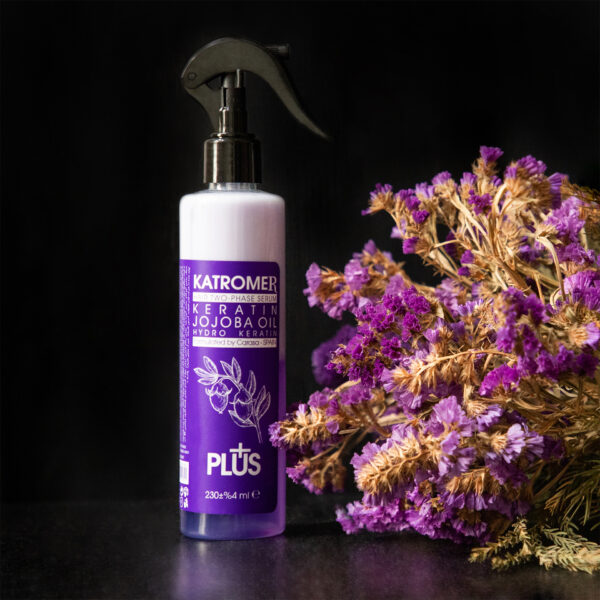How and when to use hair conditioner
With Owjen Hair Care Products
Conditioner is usually the second step to hair washing. While shampoo is formulated specifically to clean off sweat, dead skin cells, and hair products, conditioner makes hair softer and easier to manage. It also protects hair shafts from damage.
Most shampoos use chemicals that are rough on hair follicles. Additionally, just washed hair can be dry, dull, and hard to style.
Conditioners have fatty alcohols, humectants, and oils to make hair soft and flexible. Some have protein to temporarily bind split ends, and some have thickening agents to make hair feel fuller.
Dry, damaged hair can be static because it has a negative charge. Conditioning ingredients have a positive charge, so they cling to hair and make it less static.
When selecting a conditioner, it’s most important to pick the right kind for your hair and skin type. Different formulations offer different benefits and have difference potential side effects.
Here’s how to use conditioner.
Follow these steps to condition your hair:
- Wash your hair in the shower. Rinse out all shampoo.
- Use the amount of conditioner recommended on the bottle (usually about the size of a quarter).
- Spread it evenly on the ends of your hair. For long hair, spread it from chin level and down. Don’t apply conditioner to your scalp.
- Run your fingers or a wide-tooth comb through the ends of your hair to work in the conditioner.
- Let it stay on your hair for a moment, following instructions on the label. This is typically 1 minute.
- Thoroughly rinse off the conditioner.
As the name implies, leave-in conditioner is made specifically to be not rinsed off. It’s made with slightly different ingredients than typical conditioner, so it’s not as heavy.
Usually, leave-in conditioner replaces the conditioner that you’d use in the shower. Most people don’t need to use both, but you can if you want.
Manufacturers say that leave-in conditioner may promote healthy hair growth by keeping product on your hair longer, and that it may provide a heat protection barrier before you blow-dry.
Natural hair or more textured hair may benefit from the extra moisturizing leave-in conditioner provides.
To use leave-in hair conditioner:
- Gently towel-dry your hair to remove excess water after a shower.
- Apply leave-in conditioner following instructions on the bottle.
- Gently comb through your hair with fingers or a wide-tooth comb. Avoid the crown of your head.
- Let your hair air-dry, or continue to style as normal. You can also use it at bedtime.
This is shampoo made with conditioner. To save time and money, you can try using 2-in-1 shampoo.
However, it’s hard for 2-in-1 shampoo to be very effective, since shampoo has the opposite purpose of conditioner. Advancements have made it somewhat possible to do both at once, but keep in mind your results may vary.
Historically, 2-in-1 has been most like shampoo. But recently, more people have used just conditioner to wash their hair. These products, called co-wash, are slightly different and discussed more below.
To use 2-in-1 shampoo and conditioner:
- Thoroughly wet your hair in the shower.
- Apply the product to your whole head and hair, roots to ends.
- Completely rinse your hair.
- Your hair should feel clean when you’re done but also a bit soft.
Deep conditioner is beneficial for hair that’s regularly bleached, colored, permed, or styled with hot tools. These practices can cause extra damage to hair shafts.
Only use deep conditioner once a week.
To use deep conditioner:
- Read the label to determine whether your hair needs to be wet or dry when you apply it.
- Apply conditioner on the ends of your hair.
- Leave it on for the amount of time specified on the product label, from 10 to 30 minutes.
- Rinse out the conditioner.
Anyone who washes their hair should probably also use conditioner. While your head produces its own natural conditioner called sebum, shampoo removes it.
Especially dry hair should be regularly treated with conditioner, as should hair that’s frequently styled with hot tools, permed, or colored.
But even people who don’t blow-dry or curl their hair can have damage from pulling hair back in headbands and ponytails. Over time, this daily wear and tear can damage hair shafts, causing hair to become frizzy and dull.
When choosing a conditioner, take into account your hair type and styling routine.
Hair with different textures will need different ingredients to best treat it. And if you blow-dry your hair every day or get it colored often, it will need extra moisture.
Color treated hair
If your hair has been bleached, colored, or permed, it will have extra wear and tear. Look for shampoo and conditioner made for color treated hair. You can also ask your salon for recommendations.
Textured hair
Some people have thicker hair shafts than others. If this is the case for you, you may want to look for a stronger conditioner that will better heal and protect your hair.
Curly hair
Curly hair can be prone to dryness and frizz. If your hair is curly, you may need to be more diligent about spreading conditioner evenly over your head. Keep a wide-tooth comb in the shower, and run it through your hair after applying conditioner.
Using conditioner should have few side effects.
If you’re prone to acne, pull your hair up with a hair clip or claw while the conditioner sits on your hair in the shower to keep it off your skin.
Although reactions are rare, pay attention if the product you’re using is irritating your scalp. The main risk is getting product in your eyes or nose, which may cause a brief burning sensation.
Coconut oil (as well as almond, avocado, and jojoba oils) are popular alternatives to condition hair. Many of these are safe and worth a try if you’d like something more natural.

The benefit is less exposure to additives like dyes and fragrance. The downside is your hair may be greasier or heavier. Using oils may work best as a deep conditioner.
Try using an oil for a week or so to see how your hair reacts.
Be sure to read labels carefully to make sure you have 100 percent pure oil.
People with very dry hair may prefer not to use shampoo at all. This method is called co-washing. Co-washing may be gentler on hair, especially hair already prone to breakage.
But it will leave a lot of excess product on the hair. Use a clarifying shampoo every 2 weeks to clear the buildup. Co-washing is low risk and worth a try if you’re interested.
There are several kinds of conditioners and ways to use them. Tailor a conditioner to your personal needs.
Though it may seem like a purely cosmetic treatment, daily conditioner is recommended for all people to help maintain healthy and strong hair.

